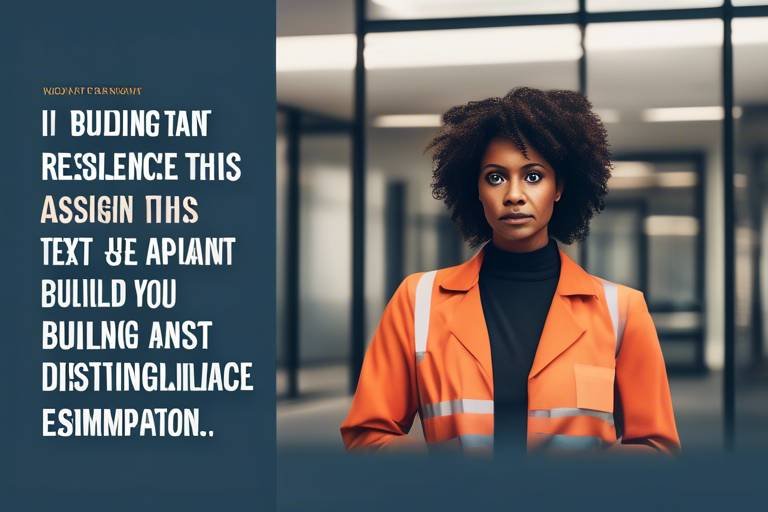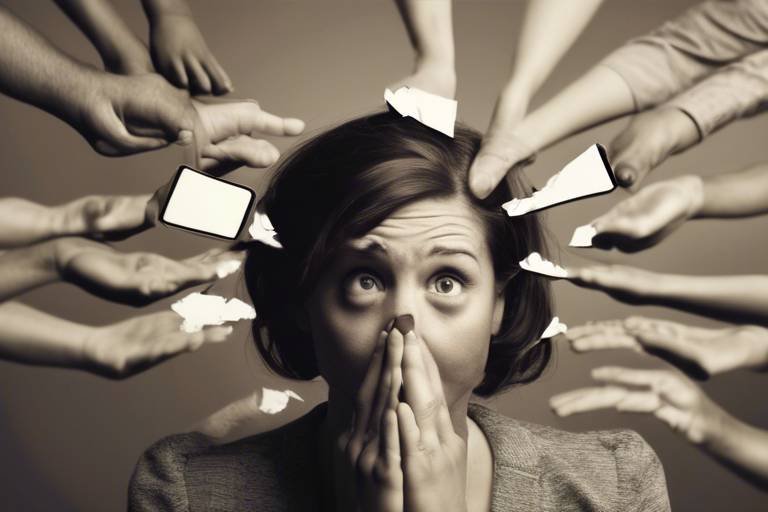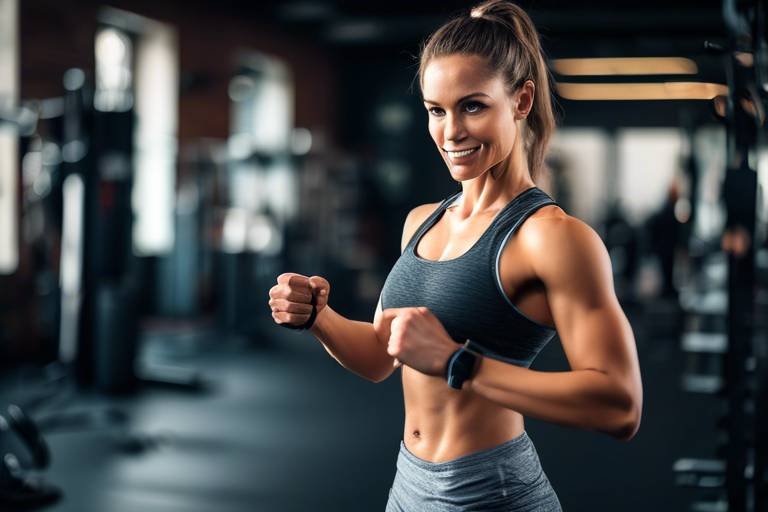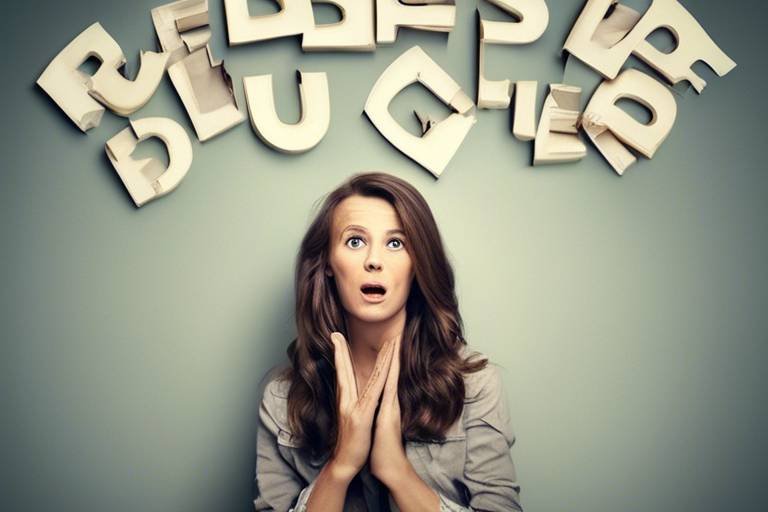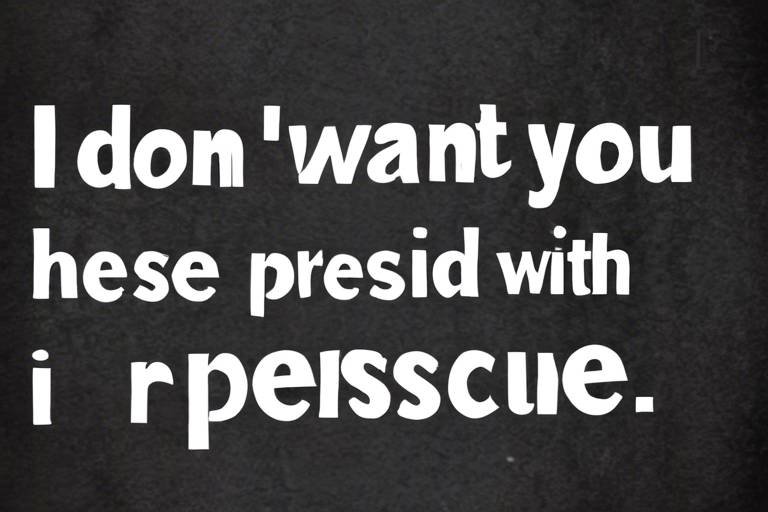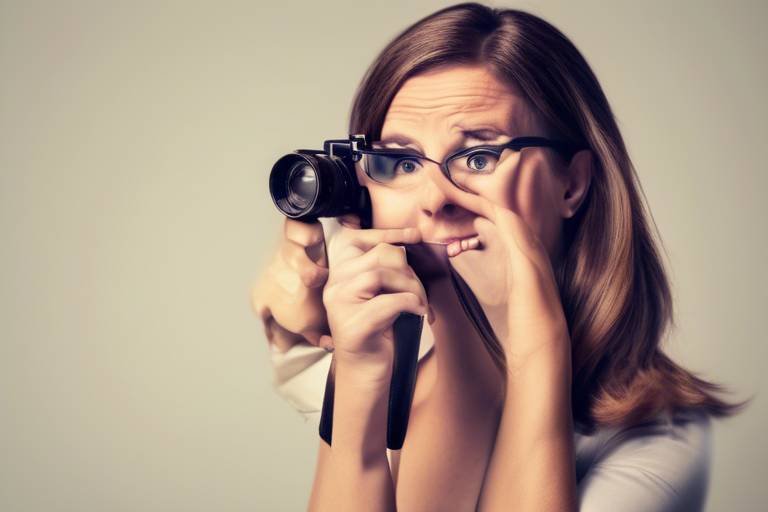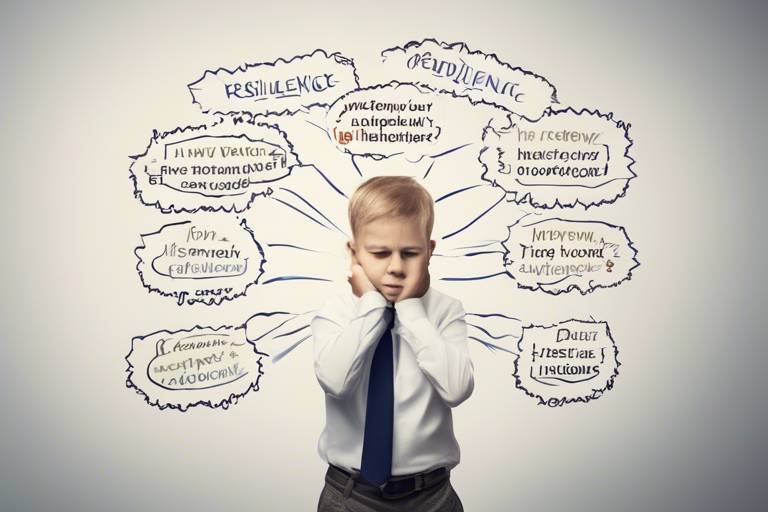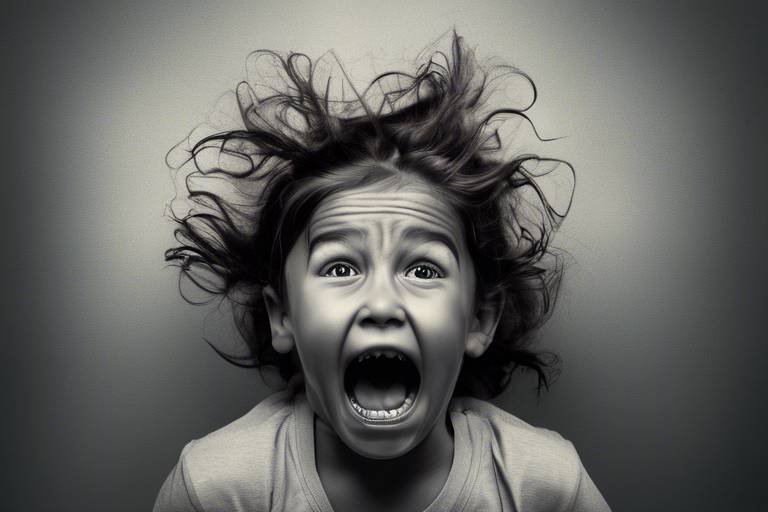Body Language - How it Reflects Confidence?
Have you ever walked into a room full of people and instantly felt the energy shift? That’s the power of body language at play! It’s fascinating how our non-verbal cues can speak volumes, often louder than words themselves. In fact, studies suggest that up to 93% of communication is non-verbal. This means that the way we carry ourselves, our facial expressions, and even our gestures can significantly influence how others perceive our confidence. So, why should you care about body language? Well, understanding and mastering these cues can enhance both your personal and professional interactions, leading to a boost in self-assurance and credibility.
When we talk about confidence, it’s not just about how you feel inside; it’s also about how you project that feeling outwardly. Imagine two people giving a presentation: one stands tall, makes eye contact, and uses expressive gestures, while the other slouches, avoids eye contact, and fidgets nervously. Who do you think will be more convincing? That’s right! The first person, because their body language radiates confidence, making their message more impactful. Recognizing the significance of body language can help you understand not only how you are perceived but also how you can shape that perception to your advantage.
In this article, we will delve into the intricate relationship between body language and confidence. We’ll explore key non-verbal cues that can enhance or undermine perceived self-assurance, such as posture, eye contact, gestures, and facial expressions. Furthermore, we will discuss the role of context and cultural differences in interpreting body language. By the end, you’ll have a clearer understanding of how to harness the power of body language to project confidence in various situations.
Body language is more than just a collection of gestures; it’s a silent language that communicates our feelings and attitudes. It can convey enthusiasm, openness, and assertiveness, or, conversely, insecurity and discomfort. By paying attention to body language, you can become more aware of how you present yourself and how others perceive you. This awareness is crucial, especially in high-stakes situations like job interviews or public speaking, where projecting confidence can make all the difference.
Understanding body language also allows you to read the room better. For instance, if you notice someone crossing their arms during a conversation, it might indicate defensiveness or disagreement. Recognizing these cues can help you adjust your approach and foster better communication. Remember, effective communication is a two-way street, and being attuned to non-verbal signals can enhance your interactions significantly.
Now that we’ve established the importance of body language, let’s dive into some key non-verbal cues that are essential for projecting confidence. These cues include:
- Posture: An upright posture conveys confidence and authority.
- Eye Contact: Maintaining appropriate eye contact establishes trust.
- Gestures: Purposeful movements enhance communication.
- Facial Expressions: Aligning facial cues with verbal messages is crucial.
Each of these elements plays a vital role in how you are perceived by others. A confident posture, for instance, not only makes you look more assertive but can also influence how you feel internally. It’s a classic case of “fake it till you make it.” By standing tall and adopting a confident stance, you can trick your brain into feeling more self-assured.
Q: Can body language be learned?
A: Absolutely! While some aspects may come naturally, many elements of body language can be practiced and improved over time.
Q: How can I improve my body language?
A: Start by being mindful of your posture, maintaining eye contact, and using gestures that reinforce your message. Practice in front of a mirror or record yourself to see how you come across.
Q: Does body language differ across cultures?
A: Yes, cultural backgrounds can significantly influence body language interpretations. It’s essential to be aware of these differences to avoid miscommunication.

The Importance of Body Language
This article explores the intricate relationship between body language and confidence. Understanding these non-verbal cues can enhance personal and professional interactions, leading to improved communication and self-assurance.
Body language is often considered the silent language of communication, yet it speaks volumes about our emotions and attitudes. Have you ever noticed how someone’s posture can change the entire atmosphere of a room? That’s the power of body language! It’s not just about what we say; it’s about how we say it. Non-verbal cues can make or break a conversation, influencing how we are perceived by others. Recognizing the significance of body language helps individuals understand their own non-verbal signals and how they can project confidence effectively.
In fact, studies show that a large percentage of our communication is non-verbal. According to research by Albert Mehrabian, about 93% of communication is conveyed through body language, tone of voice, and facial expressions. This staggering statistic highlights why mastering body language is crucial for anyone looking to enhance their confidence and improve interpersonal relationships.
So, what specifically makes body language so important? Here are a few key points to consider:
- First Impressions Matter: Your body language can create a lasting impression before you even say a word. Whether you’re meeting someone for the first time or presenting to a large audience, how you carry yourself can influence perceptions of your confidence and credibility.
- Emotional Reflection: Body language often reflects our emotions. When you’re feeling confident, it shows! Conversely, if you’re anxious or unsure, that can also be read through your body language. Being aware of this connection allows you to consciously adjust your non-verbal cues.
- Enhancing Communication: Effective communication is not just about words; it’s about the entire message. By aligning your body language with your verbal messages, you can reinforce your points and ensure clarity in your communication.
Moreover, understanding body language can significantly improve your interactions with others. Imagine walking into a room full of people with your head held high and a smile on your face. Instantly, you command attention and convey confidence. This can lead to more productive conversations and stronger relationships, both personally and professionally.
In conclusion, recognizing the importance of body language is a game changer. It empowers individuals to take control of how they are perceived and enhances their ability to communicate effectively. By mastering this silent language, you not only boost your confidence but also create a more engaging and positive environment for those around you.
Certain non-verbal cues, such as posture and facial expressions, are essential in communicating confidence. This section delves into specific body language signals that can enhance or undermine perceived self-assurance.
An upright posture conveys confidence and authority. This subsection discusses how maintaining an open and upright stance can positively influence how others perceive you in various situations.
Eye contact is a powerful tool in communication. This section examines how appropriate eye contact can establish trust and convey confidence during interactions.
Using purposeful gestures can enhance communication. Here, we explore how intentional movements can reinforce messages and project self-assuredness in conversations.
Facial expressions significantly impact how confidence is perceived. This subsection outlines the importance of aligning facial cues with verbal messages to communicate effectively.
The context in which body language is displayed can alter its interpretation. This section discusses how different environments affect the perception of confidence through non-verbal communication.
Cultural backgrounds influence body language interpretations. This subsection highlights the importance of understanding cultural nuances to avoid miscommunication and project confidence appropriately.
Being aware of the context can enhance the effectiveness of body language. This section emphasizes the need to adapt non-verbal cues according to the specific situation to convey confidence accurately.
- What is body language? Body language refers to the non-verbal signals that we use to communicate, including posture, gestures, facial expressions, and eye contact.
- How can I improve my body language? You can improve your body language by practicing good posture, maintaining eye contact, using intentional gestures, and being aware of cultural differences.
- Why is body language important in communication? Body language is vital because it can convey emotions and attitudes, often more powerfully than words alone.

When it comes to projecting confidence, non-verbal cues are like the secret sauce that can make or break your message. These cues, which include everything from your posture to your facial expressions, play a pivotal role in how others perceive you. Imagine walking into a room filled with people; the way you carry yourself can either draw others in or push them away. So, what are these key non-verbal signals that can elevate your presence and communicate confidence?
First and foremost, let's talk about posture. An upright stance not only makes you look more confident but also affects how you feel. Think of it this way: when you stand tall, your body releases hormones that can boost your self-esteem. Conversely, slouching can lead to feelings of insecurity. So, next time you're in a meeting or social gathering, remember to keep your shoulders back and your head held high. This simple adjustment can make a significant difference in how you are perceived.
Another crucial cue is eye contact. It's often said that the eyes are the windows to the soul, and this couldn't be truer when it comes to communication. Maintaining appropriate eye contact can create a sense of trust and connection. However, it's essential to strike the right balance; too much eye contact can be intimidating, while too little may come off as disinterest. Aim for a natural rhythm, where you engage with others' eyes while also breaking away occasionally to avoid staring. This technique can help you appear more confident and approachable.
Let's not forget about gestures. Purposeful movements can greatly enhance your communication. For instance, using your hands to emphasize a point can make your message more engaging and memorable. However, be cautious of overdoing it; excessive gestures can distract from your message. Instead, think of your gestures as the seasoning in a dish—just the right amount can elevate the flavor, but too much can spoil the meal.
Lastly, facial expressions play a vital role in conveying confidence. Your face can express a myriad of emotions, and aligning your facial cues with your verbal messages is crucial. For example, smiling while delivering good news can reinforce positivity and confidence. On the flip side, if your words say one thing but your face says another, it can lead to confusion. So, practice being aware of your expressions and ensure they match your intended message.
In summary, mastering these key non-verbal cues—posture, eye contact, gestures, and facial expressions—can significantly enhance your ability to project confidence. By being mindful of how you present yourself, you not only improve your communication skills but also boost your self-assurance in various settings.
- What are non-verbal cues? Non-verbal cues are the body language signals that convey feelings and attitudes without the use of words, such as posture, gestures, and facial expressions.
- How can I improve my body language? You can improve your body language by practicing good posture, maintaining eye contact, using purposeful gestures, and aligning your facial expressions with your verbal messages.
- Why is body language important in communication? Body language is important because it can significantly affect how your message is received; it often conveys more than words alone.

When it comes to projecting confidence, your posture speaks louder than words. Imagine walking into a room slouched over, your shoulders rounded and your gaze fixed on the floor. What kind of impression do you think you make? Now picture the opposite: you enter with your head held high, shoulders back, and a relaxed but open stance. Instantly, you exude an air of self-assurance that draws people in. This is the power of posture.
Maintaining an upright posture not only affects how others perceive you but also influences how you feel about yourself. Research suggests that body language can create a feedback loop; when you stand tall, you feel more confident, and this confidence can enhance your performance in various situations, be it a job interview, a presentation, or even a casual conversation.
Here are a few key aspects of posture that can help you project confidence:
- Open Stance: Keep your arms uncrossed and your feet shoulder-width apart. This openness invites others to engage with you.
- Head Position: Keep your head level and your chin up. This not only shows confidence but also helps you maintain eye contact, which is crucial for effective communication.
- Movement: Avoid fidgeting or shifting your weight from one foot to another. Instead, use purposeful movements to emphasize your points during conversations.
In professional settings, strong posture can signal authority and competence. For instance, leaders who maintain an upright posture are often perceived as more capable and trustworthy. Conversely, slouched or closed-off body language may suggest uncertainty or lack of interest, which can undermine your message and presence.
It's also essential to consider the context in which you find yourself. In some cultures, a relaxed posture might be seen as welcoming, while in others, it could be interpreted as disrespectful. Therefore, being aware of your surroundings and adapting your posture accordingly can make a significant difference in how your confidence is perceived.
In summary, your posture is a powerful tool in shaping how others see you and how you see yourself. By consciously adopting an open and upright stance, you can not only enhance your presence but also cultivate a deeper sense of self-confidence that resonates in all areas of your life.

When it comes to communication, eye contact is like the secret sauce that can elevate your interactions from mundane to memorable. Have you ever noticed how a simple gaze can convey a myriad of emotions? From confidence to trust, eye contact plays a pivotal role in how we connect with others. Imagine walking into a room filled with people. You lock eyes with someone across the room, and suddenly, there’s a spark of connection. That’s the power of eye contact!
In many cultures, maintaining eye contact is viewed as a sign of confidence and sincerity. When you engage someone with your gaze, you’re not just communicating words; you’re sending a message that you’re present, interested, and confident in what you’re saying. On the flip side, avoiding eye contact can suggest insecurity or disinterest, making it essential to strike the right balance. Think of eye contact as a dance; too little can make you appear shy, while too much can come off as intimidating.
So, how do you harness the power of eye contact effectively? Here are a few tips:
- Be authentic: Your eye contact should feel natural. Forced or exaggerated eye contact can create discomfort.
- Engage with purpose: Use eye contact to emphasize key points during conversations. It helps reinforce your message.
- Read the room: Pay attention to how others respond to your gaze. If they seem uncomfortable, it might be time to soften your approach.
Moreover, eye contact can vary depending on the context. In a job interview, for example, maintaining steady eye contact can convey confidence and help establish rapport with the interviewer. However, in a more casual setting, too much intensity might feel overwhelming. It’s all about reading the situation and adjusting accordingly.
In summary, mastering the art of eye contact can significantly enhance your communication skills. It’s not just about looking someone in the eye; it’s about creating a connection that fosters trust and confidence. So the next time you find yourself in a conversation, remember to engage with your eyes. You might be surprised at the positive impact it has on your interactions!

Gestures and movements are like the spices that enhance the flavor of our communication. When we engage in conversations, our hands, arms, and even our entire body can convey messages that words alone simply cannot express. Think about it: have you ever noticed how a person’s energy can change the atmosphere in a room? It’s often due to their gestures! Intentional movements not only reinforce what we say but also help project a sense of self-assuredness that can be incredibly persuasive.
For instance, consider how a confident individual might use their hands while speaking. Instead of keeping them tucked away or crossed, they might use open hand gestures to emphasize points, making their words feel more impactful. This openness invites others in, creating a sense of connection and trust. On the flip side, closed or fidgety movements can signal insecurity or discomfort, which can undermine the message being conveyed. It's all about balance and intention.
Moreover, the speed and fluidity of our movements can also send strong signals. Quick, deliberate gestures can convey enthusiasm and passion, while slow, measured movements often suggest thoughtfulness and calmness. Imagine a speaker on stage: if they move with purpose and confidence, they are more likely to captivate their audience. In contrast, someone who fidgets or appears restless can distract from their message, leading to a disconnect with the audience.
Another important aspect to consider is the alignment of gestures with verbal communication. When our gestures match our words, it creates a powerful synergy that enhances understanding. For example, if you’re talking about a big idea, using a sweeping hand motion can visually represent that concept, making it more memorable. Conversely, if your body language contradicts your words, it can lead to confusion and mistrust. People are often more attuned to non-verbal cues than we realize, so ensuring consistency is key.
In summary, the way we use our body during conversations can significantly influence how our confidence is perceived. By being mindful of our gestures and movements, we can effectively enhance our communication and project a stronger sense of self-assurance. So next time you’re in a conversation, pay attention to how your body is speaking—because it might just be saying more than your words ever could!
- What are some common gestures that convey confidence?
Common gestures include open hand movements, maintaining an upright posture, and using purposeful eye contact. These gestures help to project confidence and authority during interactions.
- How can I improve my body language for better confidence?
Practice maintaining an open posture, use gestures that align with your speech, and be mindful of your eye contact. You can also observe confident speakers and mimic their body language.
- Does cultural background affect body language?
Yes, cultural differences can significantly influence how gestures and movements are interpreted. It's important to be aware of these nuances to communicate effectively and confidently in diverse settings.

This article explores the intricate relationship between body language and confidence. Understanding these non-verbal cues can enhance personal and professional interactions, leading to improved communication and self-assurance.
Body language plays a critical role in conveying emotions and attitudes. Recognizing its significance helps individuals understand how they are perceived and how they can project confidence effectively.
Certain non-verbal cues, such as posture and facial expressions, are essential in communicating confidence. This section delves into specific body language signals that can enhance or undermine perceived self-assurance.
An upright posture conveys confidence and authority. This subsection discusses how maintaining an open and upright stance can positively influence how others perceive you in various situations.
Eye contact is a powerful tool in communication. This section examines how appropriate eye contact can establish trust and convey confidence during interactions.
Using purposeful gestures can enhance communication. Here, we explore how intentional movements can reinforce messages and project self-assuredness in conversations.
Facial expressions significantly impact how confidence is perceived. They are like the window to your emotions; a simple smile or a furrowed brow can speak volumes without a single word being uttered. When you align your facial expressions with your verbal messages, you create a powerful synergy that enhances your overall communication. For instance, if you're delivering a presentation and your words are positive, but your face shows tension or discomfort, your audience may sense a disconnect. This inconsistency can undermine your confidence and the message you're trying to convey.
Consider the following key aspects of facial expressions and their impact on perceived confidence:
- Smile: A genuine smile can instantly make you appear more approachable and confident. It invites others in and creates a welcoming atmosphere.
- Eyebrow Movement: Raising your eyebrows slightly can indicate surprise or interest, while furrowing them may convey confusion or concern. Being aware of these subtle cues can help you maintain a confident demeanor.
- Relaxed Features: Tension in your facial muscles can suggest anxiety. Practice relaxation techniques to soften your features and project calmness.
Moreover, it's essential to remember that facial expressions can vary significantly across different cultures. What might be perceived as confident in one culture could be interpreted differently in another. Therefore, being aware of these cultural nuances is crucial in ensuring that your expressions align with your intended message. For example, in some cultures, maintaining a neutral expression is considered respectful, while in others, animated expressions are encouraged.
In summary, facial expressions are a vital component of body language that can either bolster or detract from your confidence. By being mindful of your expressions and ensuring they harmonize with your spoken words, you can create a more authentic and confident presence, whether in a professional setting or casual interactions.
The context in which body language is displayed can alter its interpretation. This section discusses how different environments affect the perception of confidence through non-verbal communication.
Cultural backgrounds influence body language interpretations. This subsection highlights the importance of understanding cultural nuances to avoid miscommunication and project confidence appropriately.
Being aware of the context can enhance the effectiveness of body language. This section emphasizes the need to adapt non-verbal cues according to the specific situation to convey confidence accurately.
- What are the key elements of body language that indicate confidence? Key elements include posture, eye contact, gestures, and facial expressions.
- How can I improve my body language to appear more confident? Practice maintaining an upright posture, making consistent eye contact, using purposeful gestures, and aligning your facial expressions with your words.
- Are there cultural differences in body language? Yes, body language can vary significantly across cultures, so it's important to be aware of these differences to communicate effectively.

When it comes to body language, context is everything. Imagine you’re in a job interview, sitting across from a panel of serious-looking interviewers. If you slouch in your chair, avoid eye contact, and fidget nervously, what message are you sending? Conversely, if you sit up straight, maintain eye contact, and gesture confidently, you're likely to be perceived as a strong candidate. The setting in which you communicate plays a crucial role in how your body language is interpreted. This means that understanding the environment and adapting your non-verbal cues accordingly can significantly enhance the perception of your confidence.
Different situations demand different types of body language. For instance, the way you present yourself in a formal meeting will vastly differ from how you interact at a casual gathering with friends. In a professional setting, an upright posture and firm handshake can convey authority and confidence, while in a relaxed environment, a more open and laid-back demeanor may be more appropriate. Here are some contextual factors to consider:
- Setting: The physical environment can dictate how you should behave. A corporate office may require a more formal approach, while a coffee shop might allow for more relaxed body language.
- Audience: Understanding who you are communicating with is vital. Are they colleagues, superiors, or friends? Tailoring your body language to suit your audience can enhance your effectiveness.
- Purpose: What is the goal of your interaction? Whether it's to persuade, inform, or build rapport, adapting your body language to match your intent can make a significant difference.
Moreover, the same body language can be interpreted differently depending on the context. For example, crossing your arms might be seen as defensive in a business meeting, but it could simply indicate comfort in a more casual setting. This highlights the importance of being aware of your surroundings and the potential interpretations of your body language. As you navigate various contexts, consider how your non-verbal cues align with your verbal messages. The better you can harmonize these elements, the more confident and credible you will appear.
Lastly, it’s crucial to remember that body language is not a one-size-fits-all approach. What works in one context may not work in another. Therefore, developing a keen sense of situational awareness can greatly enhance your ability to project confidence. By being adaptable and responsive to your environment, you can ensure that your body language consistently matches the message you wish to convey.
- How can I improve my body language in different contexts?
Practice being aware of your surroundings and adapt your posture and gestures to fit the situation. - What should I do if I feel nervous during an important meeting?
Focus on your breathing, maintain an open posture, and remind yourself of the importance of the context to help manage anxiety. - Can cultural differences affect body language interpretation?
Absolutely! Different cultures have unique norms regarding body language, so it's essential to be aware of these when communicating across cultures.

Cultural differences play a significant role in how body language is interpreted across the globe. Just imagine walking into a room filled with people from various backgrounds; the way you hold your hands, your facial expressions, and even your posture can send entirely different messages depending on cultural norms. For instance, in some cultures, maintaining eye contact is seen as a sign of confidence and honesty, while in others, it may be perceived as disrespectful or confrontational. Isn't it fascinating how something as simple as a glance can have such varied meanings?
Understanding these cultural nuances is crucial for effective communication. If you're traveling or working in a multicultural environment, being aware of these differences can enhance your interactions and help you avoid misunderstandings. Here are a few key cultural differences to consider:
- Personal Space: In Western cultures, people often prefer more personal space compared to many Asian cultures, where closer proximity is common during conversations.
- Gestures: A thumbs-up gesture is considered positive in many countries, but in others, it can be offensive. Knowing these distinctions can prevent awkward situations.
- Facial Expressions: Some cultures may encourage expressive facial cues, while others may value a more subdued approach. This can affect how emotions are conveyed and perceived.
Moreover, the way people use their hands can vary dramatically. For example, in Italy, gestures are an integral part of communication, often used to emphasize points or convey emotions. In contrast, in Japan, excessive gesturing may be viewed as overly dramatic or inappropriate. Understanding these differences not only helps you project confidence but also fosters respect and rapport with others.
In conclusion, embracing cultural differences in body language is essential for anyone looking to enhance their confidence in diverse settings. By being mindful of how your non-verbal cues might be interpreted, you can navigate social situations with greater ease and assurance, ultimately leading to more meaningful connections.
1. How can I improve my body language to appear more confident?
To enhance your body language, focus on maintaining an upright posture, making appropriate eye contact, and using purposeful gestures. Practicing in front of a mirror can also help you become more aware of your non-verbal cues.
2. Are there universal body language signals?
While some body language signals, like smiling or frowning, are generally understood across cultures, many gestures and expressions can have different meanings depending on cultural context. It's essential to be aware of these differences.
3. How can I adapt my body language in multicultural settings?
To adapt your body language effectively, observe the non-verbal cues of those around you and adjust your own accordingly. Being open to learning about different cultural norms can also enhance your interactions.

Situational awareness is like having a sixth sense in social interactions. It’s that ability to read the room, to gauge how your body language is being received by others, and to adjust your non-verbal cues accordingly. Imagine walking into a room full of people: the energy, the vibe, and the overall atmosphere can shift dramatically based on the context. This is where situational awareness becomes essential. It’s about understanding not just your own body language but also how it fits into the larger picture of the environment you’re in.
When you’re aware of the situation around you, you can effectively tailor your body language to convey confidence. For instance, in a formal business meeting, maintaining an upright posture and using measured gestures can signal authority and competence. On the other hand, in a casual gathering, a more relaxed stance with open gestures can foster a sense of approachability and friendliness. This adaptability is crucial, as it not only enhances your communication but also helps you connect with others on a deeper level.
Moreover, being situationally aware allows you to pick up on the non-verbal signals of others. Are they leaning in, indicating interest, or are they crossing their arms, suggesting discomfort? By tuning into these cues, you can modify your own body language to either reinforce your message or ease any tension. This dynamic interplay creates a more engaging and confident interaction. It’s almost like a dance, where both partners must be in sync to create a harmonious flow.
To illustrate the importance of situational awareness, consider the following table that highlights different contexts and the appropriate body language to project confidence:
| Context | Recommended Body Language |
|---|---|
| Business Meeting | Upright posture, direct eye contact, purposeful gestures |
| Networking Event | Open stance, relaxed arms, engaging facial expressions |
| Social Gathering | Casual posture, friendly gestures, smiles |
| Public Speaking | Confident stance, expansive gestures, strong eye contact |
In conclusion, situational awareness is a vital component of effective communication. By being attuned to your surroundings and the reactions of others, you can project confidence more authentically. It’s not just about what you say or how you say it; it’s also about how you present yourself in relation to the environment and the people around you. So, the next time you’re in a social setting, take a moment to observe—your body language will thank you for it!
- What is situational awareness in body language? Situational awareness refers to the ability to understand and interpret the context of a social interaction, allowing you to adjust your body language accordingly to convey confidence.
- How does body language affect communication? Body language can significantly influence how messages are perceived, often conveying more than the spoken words themselves.
- Can body language be learned? Yes, body language can be improved with practice and awareness, helping individuals to project confidence more effectively.
- Why is eye contact important? Eye contact establishes trust and connection, making interactions feel more personal and engaging.
Frequently Asked Questions
- What is body language?
Body language refers to the non-verbal signals that we use to communicate. It includes our posture, gestures, facial expressions, and eye contact. These cues can reveal a lot about our confidence and emotions, often speaking louder than words.
- How does body language reflect confidence?
Body language can significantly influence how others perceive our confidence. For instance, standing tall with an open posture, maintaining eye contact, and using purposeful gestures can all convey self-assurance. When we exhibit these positive non-verbal cues, we not only feel more confident but also project that confidence to those around us.
- Why is posture important in communication?
Posture is crucial because it sends a strong message about how we feel about ourselves. An upright and open posture can make us appear more approachable and authoritative. Conversely, slouching or crossing our arms may suggest insecurity or defensiveness, which can undermine our confidence in various situations.
- What role does eye contact play in conveying confidence?
Eye contact is a powerful tool in communication. It helps establish trust and connection with others. When we maintain appropriate eye contact, it shows that we are engaged and confident in what we are saying. However, too little eye contact may come across as shyness or lack of confidence, while too much can be perceived as aggressive.
- Can cultural differences affect body language interpretation?
Absolutely! Different cultures have varying interpretations of body language. For example, while direct eye contact is often seen as a sign of confidence in many Western cultures, it might be considered disrespectful in some Eastern cultures. Understanding these cultural nuances is essential to avoid miscommunication and to project confidence appropriately.
- How can I improve my body language to appear more confident?
Improving your body language involves practice and awareness. Start by focusing on your posture: stand tall and keep your shoulders back. Work on making eye contact during conversations and using gestures that complement your speech. Lastly, pay attention to your facial expressions to ensure they align with your verbal messages.
- Is it possible to fake confidence through body language?
While you can mimic confident body language, genuine confidence comes from within. However, adopting confident body language can help you feel more self-assured over time. It’s like putting on a superhero cape; the more you wear it, the more you start to believe in your own strength!
- How does situational context influence body language?
The context in which you find yourself can greatly affect how your body language is interpreted. For example, a relaxed posture might be appropriate in a casual setting, but in a formal meeting, a more upright stance would be expected. Being aware of your surroundings and adjusting your body language accordingly can enhance your confidence and communication effectiveness.



